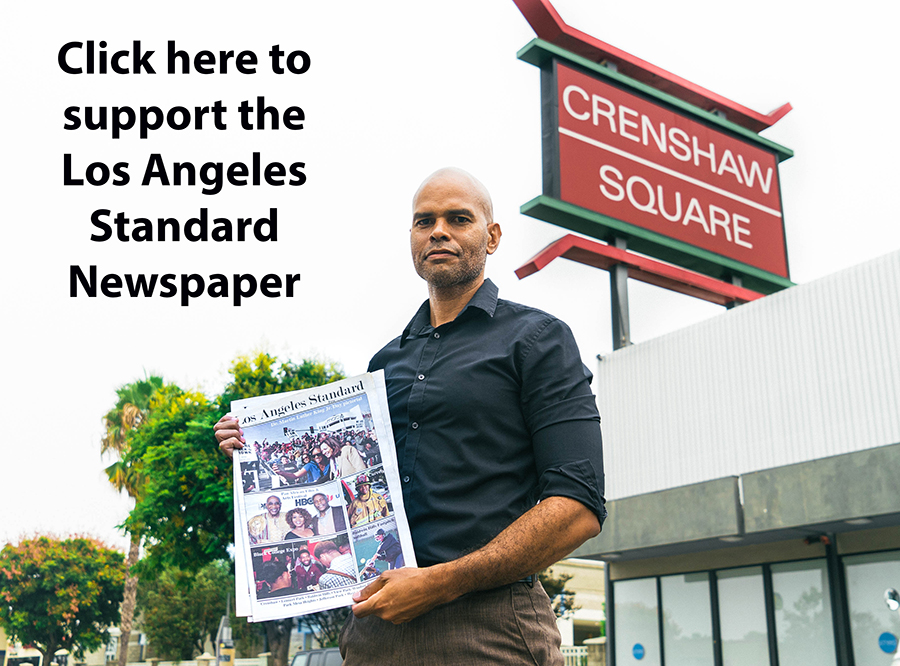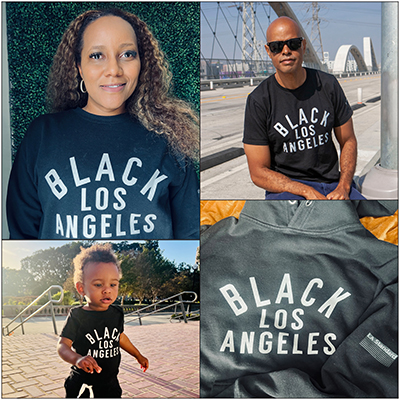Afara Lalaind and Tanika Hubbard are the first two women on the Stentorian’s executive
[ad_1]


By Jason Lewis
Dating back to 1954, the Los Angeles City Stentorians have fought for the rights of Black firefighters within the Los Angeles Fire Department. They have also helped incoming fire fighters train for testing at their head quarters in South Los Angeles on the corner of Normandie Avenue and Vernon Avenue.
Historically, the overwhelming majority of firefighters have been men, but women have fought to break barriers to enter the profession. In 2023, the U.S. Fire Administration reported that women currently account for nine percent of firefighters nationwide.
The Los Angeles Fire Department (LAFD) is only 3.5 percent female, and less than one percent Black female, so LAFD firefighters Afara Lalaind and Tanika Hubbard are advocating on two fronts: for Black people and for women. With the Stentorians, they both serve on the executive board. Lalaind is the Executive Vice President and Hubbard the Assistant Vice President.
“It’s important that Tanika and I are on this board because we bring a different perspective to what used to be a board of men,” Lalaind said. “In the Los Angeles City Fire Department, we’re less than three percent women. We’re like .001 of Black women on the job. There’s only 10 Black women on the job, and me and Tanika are two of them. So it’s very important that we give those women a voice. That we’re included in the conversations and the decisions that are being made. The Stentorians works with the fire department on different policies, so we have that voice so that we can speak not only for the Black women on the job, but for all women.”
“As the executive board, we all work as a team,” Hubbard said. “We meet with the fire chief, we have meetings with different members within the fire department to make sure that our diversity, equity, and inclusion is being properly installed in the fire department. We’re in workgroups that create plans to ensure that the discrimination that the people who came before us experienced doesn’t happen.”
Lalaind is an arson investigator while Hubbard is a firefighter paramedic.
Lalaind is from San Francisco, and she became interested in the fire services when she was 22 years old. Her sister-in-law worked for the San Jose Fire Department, and introduced her to the profession.
“She let me know that this was an opportunity for me where I could be present for my children and be able to have a rewarding career where I could support my family,” Lalaind said.
Lalaind started her journey to the LAFD by taking a fire science class at the City College of San Francisco, where her instructor was a woman.
“I was just blown away from that one class, and there was no turning back for me,” she said.
While Lalaind was working her way through the process of becoming a firefighter, she received a lot of advice and encouragement to keep going.
“Early on when I was introduced to the job, I had a lot of women who were my mentors who stood behind me and made me feel empowered to join this profession,” she said. “So early on I had no doubt that I could do this job. I understood the challenges of being in a male-dominated field, but I wasn’t worried.”
Hubbard’s journey started at a much earlier age. Her father is a retired firefighter who was on the job for 32 years at a fire station in South Los Angeles.
“I grew up in the fire department as a kid, so the fire station was my playground,” she said. “I was exposed to it, but I didn’t think of it as a career until after college. I was talking to my father one day, and he asked me what I wanted to do. I said that I wanted to be a psychologist. He said that he thinks that I should be a firefighter. I tested, fell in love, and I’m here today.”
Before joining the LAFD, Hubbard attended Howard University and also UCSD. Her first step to becoming a firefighter was to join an accelerated EMT program so that when she applied for the fire department, she would already have the minimum qualifications. She was a volleyball player and a swimmer, so training for the physical aspects was not difficult for her.
“I was already an athlete, so I trained six days a week normally, so that part wasn’t a huge transition for me,” she said. “I worked with the Stentorians to learn the skillset. As an athlete, you already weight train, so that part wasn’t different for me. Female athletes have some trunks (strong legs). In the fire department, your legs are your best friends. But getting used to having 70 to 80 pounds on your body, that’s what I had to train for. So I got a weight vest, and I would do stairs for a minimum of 45 minutes. I would do my actual workout with a weight vest on just so that I could get used to doing work under weight.”
Lalaind was also a former athlete, so the training came naturally to her as well.
“I was a track runner and at the time running marathons every year,” she said. “So being able to be in this profession and still operate as an athlete, and still have that physical aspect was something that was important to me.”
Lalaind joined the LAFD eight years ago and she serves as a role model within the community that she serves, and she has had some challenges that she has had to overcome.
“As a female, I’m bringing a whole other perspective to the fire department,” she said. “Growing up, I had never seen any women on the job. I had never had any experiences with women in the fire service. So I believe that being present in the community is important. I work in communities such as South L.A., and the young girls and the young boys get to see me. And if they see me, then they can believe that this is a job that is for them.
“Some of the challenges is that it is a male-dominated field. So we have to navigate a lot of stereotypes or biases about females being on the job. It’s important for me to break those barriers and create an environment for the women who come after me.”
Lalaind is the first African American female to join the arson investigator unit, which she had to take additional classes to join.
“The firefighters come and save the day, and the arson investigators bring closure to the community through their investigations,” she said.
Hubbard joined the LAFD five years ago, and as a firefighter paramedic, she has to think quickly and rely on her training to save people’s lives.
“You have to understand signs and symptoms so that you can treat people appropriately,” she said.
A good portion of both Lalaind and Hubbard’s training began at the Stentorian’s headquarters, and that is a great place to start for anybody who is interested in joining the fire department.
“This is a great first step because we expose you to all aspects of the job,” Hubbard said. “You can do ride alongs, you can get hands on experience with the tools and equipment, and you can get interview prep.”
“Pretty much every city has a Black firefighters association to the Black members on the job and the Black community,” Lalaind said. “Moving here from San Francisco, I came here with no family, no friends, and I didn’t know a single person. The Stentorians were one of the first resources that I had when I came here. There were times when I came here on the city bus to complete parts of my application process. I would come here and throw ladders. Before I ever came on the job, I knew that what I was doing was bigger than me. I love that the Stentorians embody that. It’s always about the next generation.”
Within the Stentorians, Lalaind and Hubbard founded the Brigade Sisters, which is a partnership between the Los Angeles City and Los Angeles County Black female firefighters. Retired and current Black female firefighters come together to support one another.
“This is a support group where we can bring sisters together and have each other to lean on, tell stories, and create a community so that we don’t feel alone,” Lalaind said.
“Even going to fellow female firefighters who are not Black, the experience is slightly different,” Hubbard said. “So to go and find a group of people who understands your experience completely, it’s just refreshing to have that support system. We need that support system so that we can thrive in our careers.”
For more information about the Stentorians, visit www.lacitystentorians.com
[ad_2]
Read More:Afara Lalaind and Tanika Hubbard are the first two women on the Stentorian’s executive

Comments are closed.